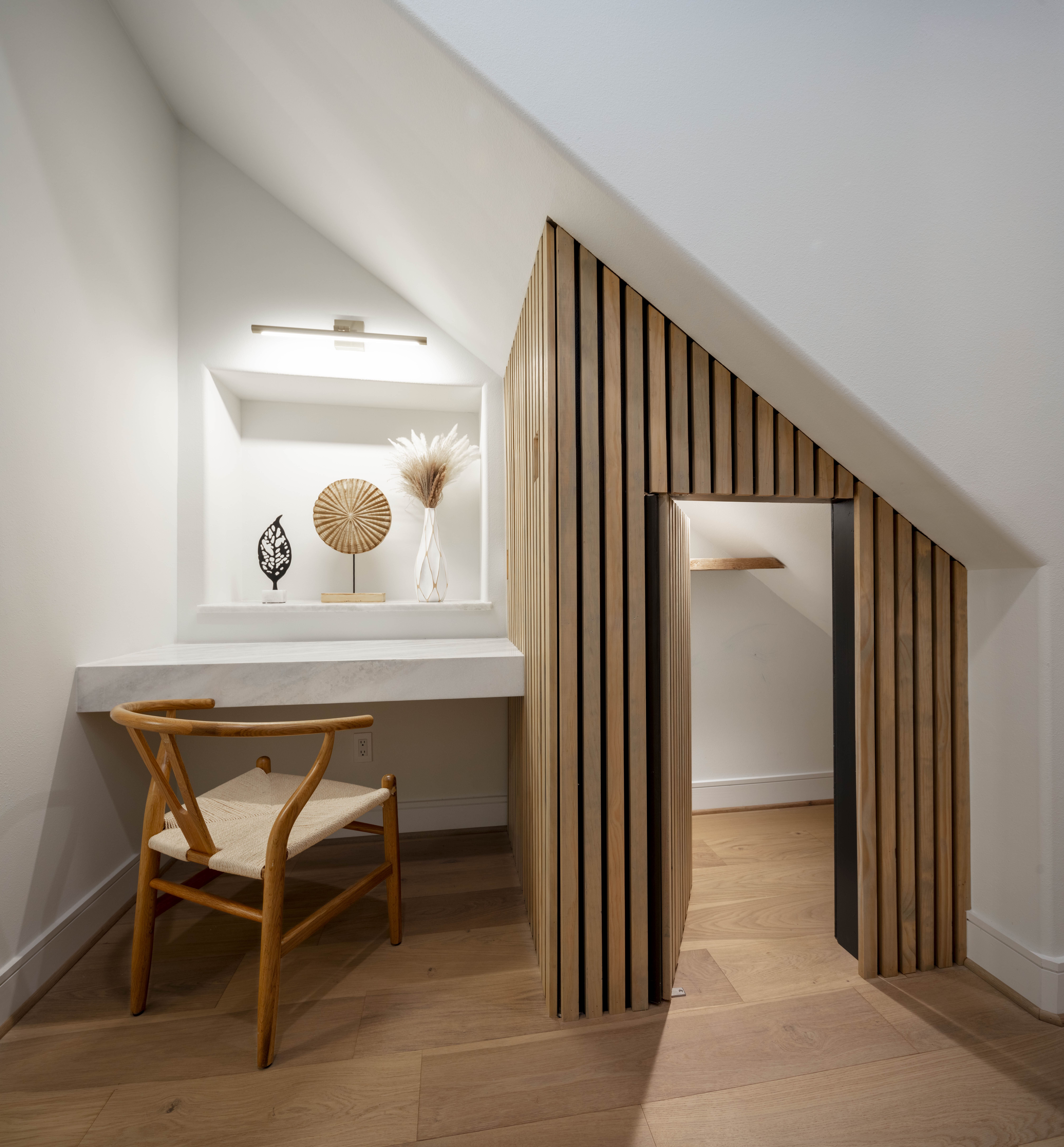
Organic modern design is a contemporary style that blends natural elements with sleek, minimalist aesthetics. It emphasizes simplicity, functionality, and a connection to the outdoors, creating spaces that feel both sophisticated and inviting. Here are some key characteristics of organic modern design and different ways to convey this trend:
Natural Materials: Organic modern design incorporates a variety of natural materials such as wood, stone, metal, and glass. These materials add warmth, texture, and visual interest to the space. Examples include hardwood floors, exposed wooden beams, stone countertops, and metal accents.
Clean Lines and Minimalist Forms: The design features clean lines and minimalist forms, avoiding excessive ornamentation or clutter. Furniture and architectural elements have simple shapes and streamlined profiles, contributing to a sense of openness and tranquility.
Neutral Color Palette: A neutral color palette dominates organic modern interiors, with hues inspired by nature such as beige, taupe, gray, and white. These soft, understated colors create a calming atmosphere and serve as a backdrop for natural materials and pops of color.
Biophilic Elements: Biophilic design principles are often incorporated to enhance the connection between indoor and outdoor spaces. This may include large windows that maximize natural light and views, indoor plants to bring greenery indoors, and outdoor living areas seamlessly integrated with the interior.
Sustainable and Eco-Friendly Features: Sustainability is a key aspect of organic modern design, with an emphasis on environmentally friendly materials and practices. This may involve using reclaimed wood, recycled materials, energy-efficient appliances, and passive design strategies to minimize environmental impact.
Textural Contrast: Textural contrast adds depth and visual intrigue to organic modern interiors. Combining smooth surfaces with rough textures, such as pairing a polished concrete floor with a rough-hewn wooden table or a plush rug with a sleek leather sofa, creates a dynamic interplay of tactile sensations.
Fluidity and Openness: Spaces in organic modern design tend to flow seamlessly from one area to the next, creating an open and airy feel. Open floor plans, expansive windows, and strategically placed architectural elements facilitate natural light and air circulation, enhancing the sense of spaciousness and connection to the surrounding environment.
Curves and Organic Shapes: While the style generally favors clean lines, organic modern design also embraces curves and organic shapes to soften the overall aesthetic and evoke a sense of fluidity and movement. Curved furniture, sculptural lighting fixtures, and rounded architectural details add visual interest and a touch of whimsy to the space.
By incorporating these elements, organic modern design creates harmonious and timeless interiors that celebrate the beauty of nature while offering comfort, functionality, and a sense of well-being.